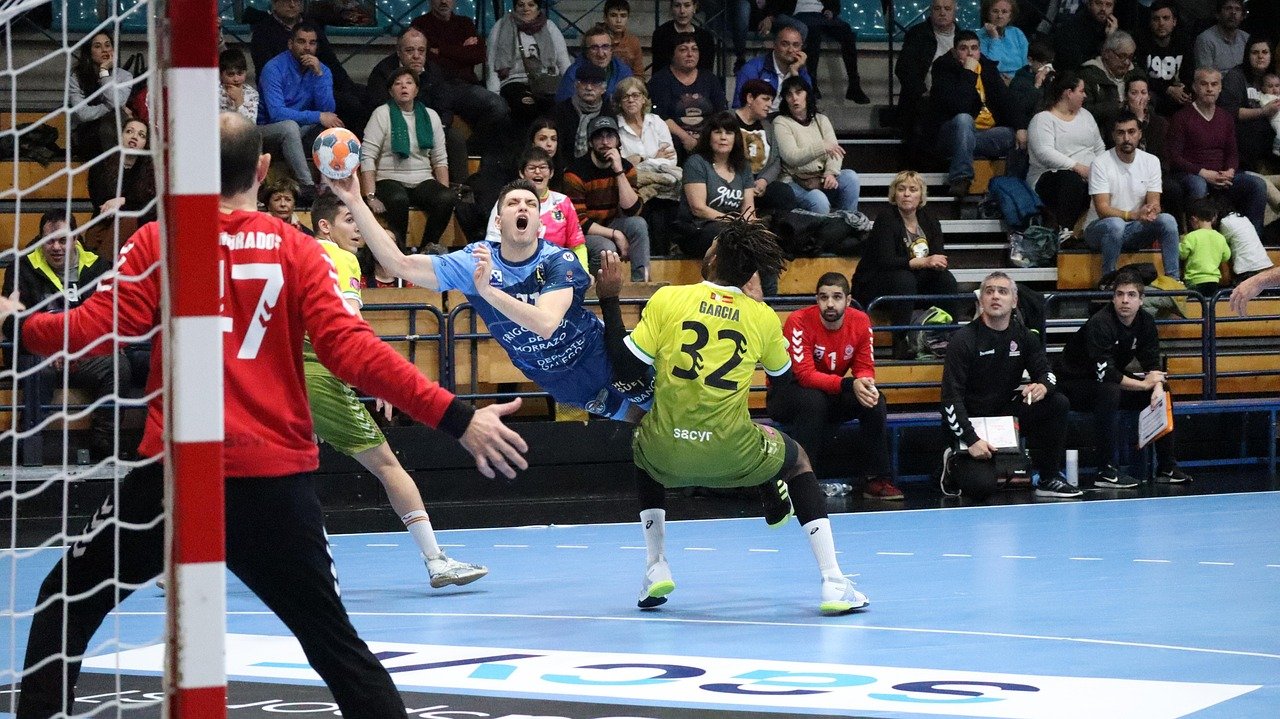In handball, every position has a distinct purpose, but few are as dynamic and fast-paced as that of the wing player. Often responsible for finishing fast breaks and exploiting the narrow angles near the touchline, wing players require a unique blend of speed, timing, and shooting accuracy. This blog explores the roles, responsibilities, and skills needed to thrive as a wing player in handball.
Who Are the Wing Players?
Wing players in handball are positioned on the far left and right sides of the court. They are typically among the fastest and most agile players on the team, tasked with scoring from wide angles and capitalising on quick offensive transitions.
- Left Wing (LW): Positioned on the left side of the court, usually played by right-handed players for optimal shooting angles.
- Right Wing (RW): Positioned on the right side, often played by left-handed players.
These players play a vital role in both offence and defence and are integral in maintaining team width and pace.
Key Responsibilities of Wing Players
Offensive Duties
- Fast Break Finishing: Wings are often the recipients of long outlet passes during fast breaks. They need to be ready to sprint and finish under pressure.
- Scoring from Tight Angles: Wing players frequently shoot from acute angles close to the sideline, requiring excellent technique and precision.
- Stretching the Defence: By staying wide, they force the opposing defence to spread out, creating space for central players.
- Supporting the Back Players: Wings offer passing options when backs are under pressure and can execute quick give-and-go plays.
Defensive Duties
- Marking the Opponent’s Wing: On defence, they are responsible for shadowing the opposing wing player.
- Closing the Sidelines: Wings must prevent the opposing team from exploiting the edges of the court.
- Intercepting Passes: With good anticipation, wings can disrupt passing lanes and initiate turnovers.
Essential Skills for Wing Players
Speed and Agility
Wing players must be able to accelerate quickly and change direction with ease. Their speed allows them to execute fast breaks and recover quickly on defence.
Jumping Ability
Leaping from the wing position often involves taking off from very little ground space. Players must be able to jump with power and control.
Shooting Technique
Shooting from tight angles is challenging. Wing players typically use techniques such as:
- Jump Shot from the Wing: Leaping off the ground and shooting mid-air to gain height and angle.
- Spin Shot: Imparting spin to the ball to curve it around the goalkeeper.
- Lob Shot: A soft, arching shot over a rushing goalkeeper.
Decision-Making
In high-pressure moments, wing players must decide whether to shoot, pass, or delay. Quick decision-making is key.
Positional Awareness
Understanding when to cut inside, stay wide, or time a run is vital for successful plays and defensive cover.
Training Tips for Wing Players
Practice Shooting Drills
- Set up cones at various angles on the wing and practise jump shots.
- Use goalkeepers in training to simulate real-game situations.
Improve Acceleration
- Incorporate sprint training and ladder drills to enhance speed and footwork.
- Focus on explosive starts and stops to mimic fast break situations.
Agility Exercises
- Use agility cones, hurdles, and resistance bands to build lateral movement skills.
Game Simulations
- Engage in small-sided games where wing players are the focus, giving them frequent ball touches and shooting opportunities.
Common Mistakes to Avoid
- Cutting in too early: This reduces shooting angles and congests the middle of the court.
- Poor communication: Failing to signal availability to backs can disrupt offensive flow.
- Overcommitting on defence: Jumping too early or being out of position allows easy passes or shots.
The Evolution of the Wing Role
Modern handball has increased the physical and technical demands on wing players. With faster gameplay and tighter defences, wing players now need to:
- Adapt quickly to tactical switches.
- Execute more complex plays and set-pieces.
- Be involved in transitional defence and offence.
Final Thoughts
Wing players may operate from the sidelines, but their impact is central to a team’s success. With the right mix of agility, intelligence, and technique, wing players can become deadly finishers and essential cogs in both offensive and defensive systems. Whether you’re coaching or playing, understanding the intricacies of this role will undoubtedly elevate your game.



